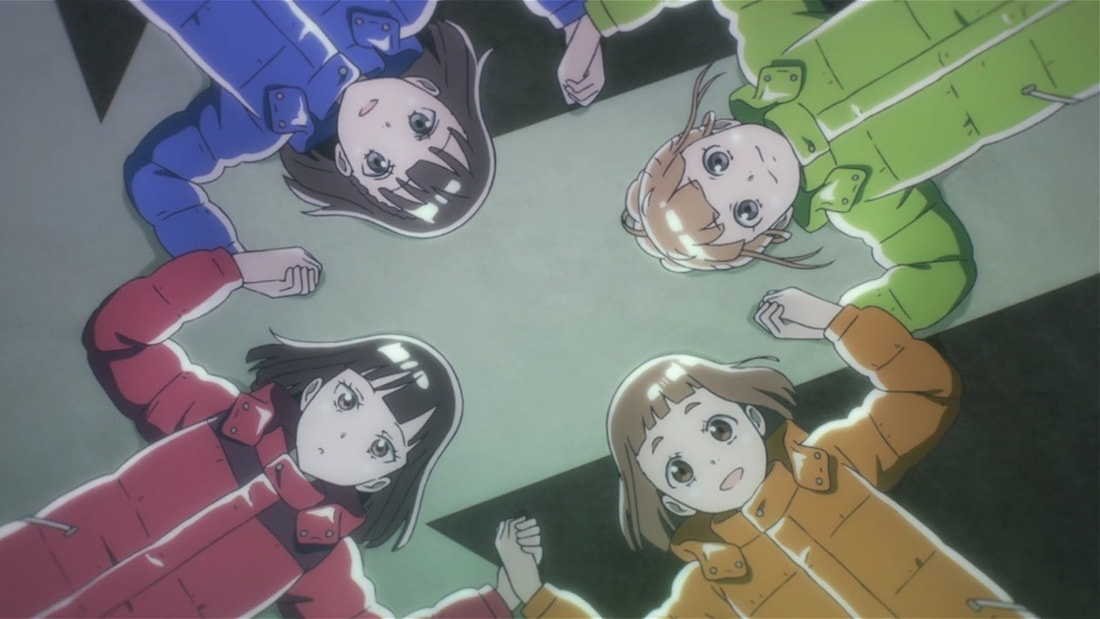|
Well, the title seems too “selling” but believe me after you watch that this title is right. As a woman who likes anime, searching for the right anime is a challenge. Most anime out there are, I believe, made originally for men. It serves men's eyes really well while for me, sometimes it makes me uncomfortable watching it. This one is different.
This is the story of Mari Tamaki. Mari Tamaki lives in a suburb of Tokyo, and despite having a bunch of plans for what she wanted to do during her high-school years, she hasn't really done anything. After meeting Kobuchizawa Shirase, the pair decide to join a civilian expedition to Antarctica where Shirase's mother disappeared three years prior while leading the previous expedition. Before they embark on the journey they are joined by Hinata Miyake, a girl who quit school due to both internal and external pressure and resigned herself to watching the world pass by, and Yuzuki Shiraishi, a TV starlet who struggles making real friends. Their journey isn't fantastical in any way, but it is still the kind of experience that can make you realize what you were missing in life, appreciate what you have, and forever change you in ways that feel almost magical. The single best word to describe A Place Further than the Universe is genuine. From the moment we meet Mari – we see her using her phone to post about her daily life and constantly talk to her friends – the show presents a better portrayal of millennial culture than most movies about teenagers. Each episode begins with what appears to be an Instagram post, and sounds of notifications, emails and texts are constantly ringing throughout the show. The first thing the girls do off the plane? Check their phones. At the hotel? Check their phones. As soon as they step foot in Antarctica? Check their phones, yet the characters also know when to put their phones away because they're sharing a moment together, or when to take them out to immortalize said moments. This extends to their lives and to the trip itself. Whether it's being in a place where they don't speak the language or getting sea-sickness because it's their first time on a boat, the show dares to make the voyage to the harsh cold of Antarctica feel real, grounding the harsh realities of the trip while spending time in one of the most unforgiving places on Earth. Yet, given that this is a show about girls who want nothing more than to see penguins, eat shaved ice, watch the aurora borealis and experience the beauty of Antarctica, it should come as no surprise that Madhouse gives us one of the most visually impressive shows of the past decade. The vibrant and restless metropolis of Singapore and the busy ports of Fremantle, Australia are enough to make you want to get up from the couch and see the world, while the beautiful vistas from the vastness of the ocean and the endless frozen tundra are a reminder of the beauty that's out there. And did you know that there's a platform which is as interesting as the story of "A Place Further Than The Universe" in Memories Interactiv, even if you want to create your own awesome perspective journey inside a game, you can download it here for IOs and here if you're using Android
0 Comments
Anime & manga is often bashed for the way these two products portray women. Not all i believe but most of them. At least that is what has been considered pop culture. This makes me think: the best practices if you want to portray something, it has to be directly created by someone who’s there on the portrayal. Or at least as the right person. You don't portray something specially someone just for the sake of your imagination. It has meaning when it represents something specially gender.
This question leads to another question. How do women play their part in the whole anime industry? That question led me to some google pages about the history of the anime industry. In post-world war 2 Japanese society, women were expected to get married and take care of the household. Pursuing a career was not an option. That also applied to the anime industry. The only part of the industry given to women back then is “Shiage” or “Finishing”. While at home, women can ink, clean up and draw. In the late 50s the anime industry started to record several names of prominent female animators such as Okuyama Reiko and Nakamura Kazuko. Of course with discrimiation happens towards female employee such as lower salary. In 1985, Studio Ghibli was founded and many capable female animators have been involved in its projects behind the scenes. For instance, until her death in 2016, Futaki Makiko worked on all of Miyazaki's films, beginning with Nausicaä of the Valley of the Wind (1984). She was also a key animator for Otomo Katsuhiro’s Akira (1988), and was celebrated for her skill in detailed natural animation. Then the 90s came. Marking the coming hugely prolific Nobutomo Keiko, who was lead writer on Cowboy bebop. Which one of a most timeless anime of all time. After that I think the anime industry has already become more friendly for women. There're a thousand titles you can search that’s made from a woman's perspective. Some other things surely still need to be improved. But it's always nice to know we’re growing to a better situation day by day. if you’re looking for an anime-style game created also by mostly women team, you can see Memories Interactive an otome anime styled game from Indonesian developer which you can download here if you’re using iOS or here if you’re using Android |
AuthorHai! My name is Erica. And I love everything about Japan. Start with fashion, culture until manga. So, lets enjoy my blog! ArchivesCategories |


 RSS Feed
RSS Feed
